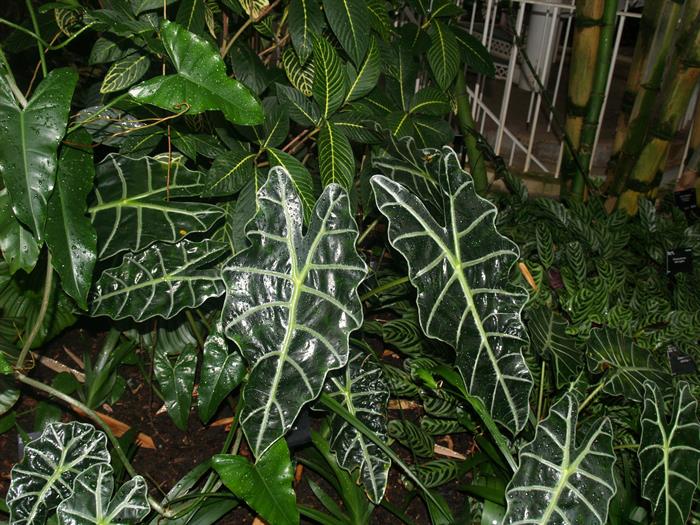Alocasia
Characteristics and culture of Alocasia; also known as Elephants Ears.

Family Araceae
Genus Alocasia
Common Name Elephant ears, Ape plant
Appearance
Clump forming with large heart-shaped leaves arising, often up to 2m high, from central growth rhizome.
Establishment
Add moisture retentive compost or peat into the site, provide protection from strong sun and wind in early years, will tolerate full sun provided ample moist is present,
needs a frost free area. Propagate by seeds, offshoots, division of rhizome.
Culture
Keep site moist, add compost and mulch regularly. Pests can include cluster caterpillar, thrips, mites. Susceptible to stem and root rots.
Avoid temperatures below about 8 degrees C. Likes 65 to 80% shade.
Cultivars
A. x amazonica A hybrid of A. watsoniana an A. watsoniana from south east Asia. Grows to around 80cm tall. Used as a hourseplant
|
A x amazonica
|
|
A. macrorrhiza (Ape, Biga) - Large arrow-head shaped ornamental
leaves borne on plant up to 4m. Although edible, it must be treated
before eating.
A. macrorrhiza 'Variegata' - large or small irregular splotches of creamy-white or grey-green on the leaves.
A. macrorrhiza 'Rubra' - Pale violet leaf blades.
Many hybrid forms are also available.
|
|
| |
|
Want to Learn More?
Check out publications in the ACS Bookshop: www.acsbookshop.com
For more information on Courses on Horticulture and Plants:
In Australia: www.acs.edu.au/Courses/horti.aspx
In the UK: www.acsedu.co.uk/Courses/horti.aspx
Tropical Plants Course: www.hortcourses.com/courses/tropical-plants-bht234-404.aspx
You may also be interested in....